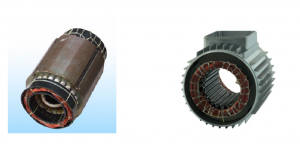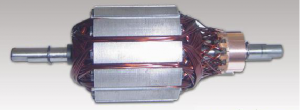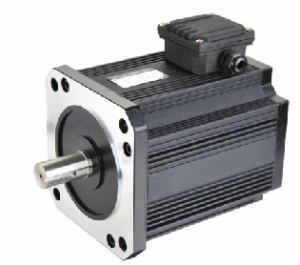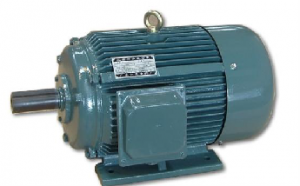Permanent magnetic synchronous motor: One of the AC synchronous motors, whose speed is strictly synchronized with the given frequency of the power supply, the rotation difference is zero.
Asynchronous motors:
Asynchronous motors are AC induction motors. After the stator is connected to AC power, a rotating magnetic field is generated. Electromagnetic induction causes the rotor to generate current and generate electromagnetic torque to rotate the motor. Its speed is always lower than the rotating magnetic field. The slip is not zero.

The stator structure of the permanent magnet synchronous motor is basically the same as that of the asynchronous motor, which takes effect of receiving and exporting electrical energy and producing a rotating magnetic field. Their structural form is not much different, the permanent magnet synchronous motor and asynchronous motor stator are by the guide of the stator iron core and winding, seat, end cover, and other components.

Asynchronous motor: The rotor consists of an iron core and a winding, mainly squirrel-cage and wire-wound rotors. A squirrel-cage rotor is cast with aluminum bars. The magnetic field of the aluminum bar cutting the stator drives the rotor.
Permanent magnet synchronous motor: The permanent magnets are embedded in the rotor magnetic poles, and are driven to rotate by the rotating magnetic field generated in the stator according to the principle of magnetic poles of the same phase attracting different repulsion


permanent magnet material with pre-magnetized (magnetic-filled) pre-magnetized (magnetic) on the surface or internal of the permanent magnetic motor, which provides the necessary air gap magnet ford for the motor
This rotor structure can effectively reduce the size of the motor, reduce losses, and improve efficiency. In other structures, a magnetic field is generated by passing a current through the motor windings.
Asynchronous motor: It is directly started by power frequency electricity, and the starting current is large, which can reach 5 to 7 times the rated current, which has a great impact on the power grid in an instant. The large starting current causes the leakage resistance voltage drop of the stator winding to increase, and the starting torque is small so that heavy-duty starting cannot be achieved. Even if the inverter is used, it can only start within the rated output current range.
Permanent magnet synchronous motor: It is driven by a dedicated controller, which lacks the rated output requirements of the reducer. The actual starting current is small, the current is gradually increased according to the load, and the starting torque is large. Under the same line capacity, it is easier to achieve heavy-duty starting with a permanent magnet synchronous motor.
Asynchronous motors have a low power factor, they must absorb a large amount of reactive current from the power grid, which causes a large amount of reactive current in the power transmission and transformation equipment and power generation equipment of the power grid, which in turn reduces the quality factor of the power grid, aggravating the power grid and transmission and transformation equipment and power generation equipment load. The large starting current of asynchronous motors will cause a short-term impact on the power grid, and long-term use will cause certain damage to power grid equipment and transformers. It is necessary to add power compensation units and perform reactive power compensation to ensure the quality of the power grid and increase the cost of equipment use.
There is no induced current in the rotor of the permanent magnet synchronous motor, and the power factor of the motor is high, which improves the quality factor of the power grid and eliminates the need to install a compensator. At the same time, due to the high efficiency and high power factor of the permanent magnet motor, the capacity of the power supply and transformer of the motor can be lower than that of the asynchronous motor, and the specifications of switches and cables of other auxiliary facilities can be smaller, and the corresponding system cost is lower.
Permanent magnet synchronous motor drives the equipment directly. Because the reducer is eliminated, the motor output speed is low, mechanical noise is low, mechanical vibration is small, and the failure rate is low. The entire drive system is almost maintenance-free. Asynchronous motor + reducer structure will generate vibration, heat, high failure rate, large lubricant consumption, and high manual maintenance cost; it will cause certain downtime losses.
Enneng, a China leading permanent magnet motor supplier, is known for high quality machines in the machinery production industry. Enneng’s main permanent magnet motors are FTYP series of three-phase AC, TYB Series Standard Type, TYP Series General Type, TYDP Series Direct Drive and Gearless Motor, etc. Enneng would like to jointly work with users all over the world to focus on energy-saving solutions.